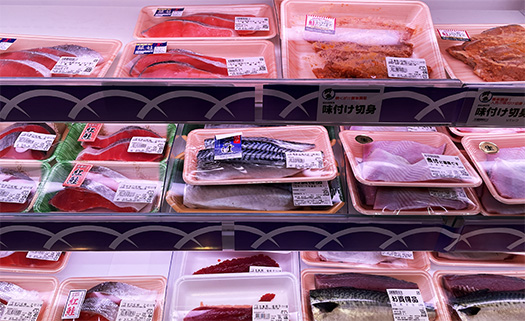

古事記のなかで、全国を遠征して各地域の豪族を平らげたヤマトタケルが、大和にむけての帰路、尾張国を去った頃、海辺の道をたどっていくと徐々に足が折れてしまって、やがてその姿が鳥になっていって、多くの人びとがその鳥の行く手を追ったけれど、やがて大空高く、見失ってしまうという有名な一節がある。
そのテーマ性と表現において、古事記の文学としての中核を構成している。
日本列島では古来から「渡り」をする鳥たちの「風物詩」がひとびとの心象を深くえぐっていたことがわかるし、現代人であるわれわれもまた、その心象世界にふかくとらわれているのだと思う。
そんな心理があって、加齢とともに鳥たちの様子に愛情を感じてしまってきている。
北海道の地では、空知平野が樺戸山系と出会う湿地に「宮島沼」があって、日本列島とシベリアとを往来する渡り鳥たちの楽園として知られている。
クルマ社会という移動手段の発展した現代に生きる人間習慣として、この宮島沼への往来が楽しい。
上の写真は宮島沼の近く周辺の畑地に蝟集していた「マガン」たちの群。そして下の写真は到達した宮島沼から北方に位置する樺戸の山々の春の雪景色と、この時期の宮島沼の七色の水面。
わたしの幼年期、母はその実家が空知平野の中央にある三笠にあって、末っ子であるわたしだけを連れて、夫婦ケンカの「停戦期間」を過ごすことが多かった(笑)。かわいい末っ子を人質に取られて父親が悲鳴をあげて詫びてくることが日常的風景だったのだろう。
その母の実家滞在時、よく西北方に位置する「連山」としてこの樺戸山系を見ていた記憶残像がある。
たぶん山並みというのものの形象を、人類というのは克明に記憶する動物種のように思える。地球動物種の中で稀有なグレートジャーニーという「五大陸制覇」を成し遂げたDNA内部で、そういう能力が発達したのではないか、そしてそういう能力に秀でた個体が、人類集団の指導層として導いていたのではないか。
その心意伝承として、渡り鳥たちへの畏敬の念、感傷の感覚が人間には積層しているように思える。
とにかく宮島沼と鳥たちの様子にどんどん気持ちがのめり込んできてしまっている。幸いに、カミさんもそういう心理に同調してきてくれている。シアワセ。
English version
[Northern spring Migratory birds visit Miyajima swamp and flounder]
A famous passage in the Kojiki that respects migratory birds as a human psychological tradition of this archipelago society. It is a major part of the Japanese mental image connected with eternity. …
In the Kojiki, when Yamatotakeru, after having conquered the powerful tribes of each region in his expedition across the country, left Owari Province on his way back to Yamato, his legs gradually broke as he followed the road by the sea, and eventually his figure became a bird, and many people followed his path, but eventually lost sight of him high in the sky. There is a famous passage in which the bird is lost in the sky.
In its thematics and expression, it constitutes the core of the Kojiki as literature.
It is clear that since ancient times, the “genre” of migratory birds has deeply affected people’s mental images of the Japanese archipelago, and we, as modern people, are also deeply caught up in this world of mental images.
Because of this, as we age, we feel more and more affection for the birds.
In Hokkaido, Miyajima Marsh, a wetland where the Sorachi Plain meets the Sakhalin Mountains, is known as a paradise for migratory birds that come and go between the Japanese archipelago and Siberia.
As a human habit in today’s developed car-oriented society, it is a pleasure to visit the Miyajima Swamp.
The photo above shows a flock of geese gathered in a field near Miyajima Swamp. The picture below shows the spring snowy landscape of the Kabado mountains to the north of Miyajima-swamp and the seven-coloured surface of Miyajima-swamp at this time of the year.
During my childhood, my mother’s family home was in Mikasa, in the middle of the Sorachi Plain, and she often took only me, her youngest child, with her for “truce periods” in their fights (laughs). It must have been a daily scene for the father to scream and apologise for taking his cute youngest child hostage.
When I was staying at my mother’s house, I often saw the Kabado mountain range as a “mountain range” located in the north-west.
Humans seem to be an animal species that remembers the shapes of mountain ranges very well. This ability may have developed in the DNA that enabled them to conquer the five continents on their Great Journey, which is rare among the animal species of the earth, and individuals who excelled in this ability may have led the human group as its leaders.
It seems that humans have a layered sense of awe and sentimentality towards migratory birds as part of their psychic tradition.
In any case, I am becoming more and more absorbed in the Miyajima Swamp and the birds. Fortunately, my wife is getting in tune with this kind of psychology. She is very happy.
Posted on 4月 7th, 2025 by 三木 奎吾
Filed under: 日本社会・文化研究 | No Comments »






















